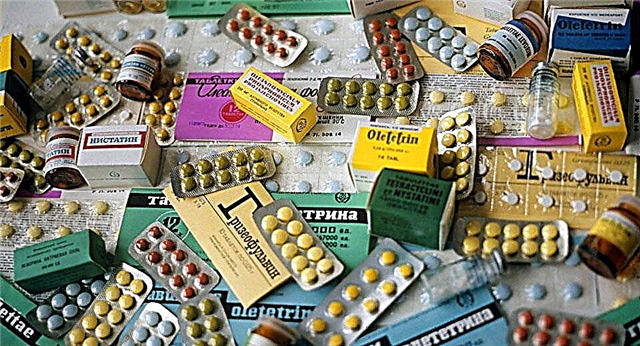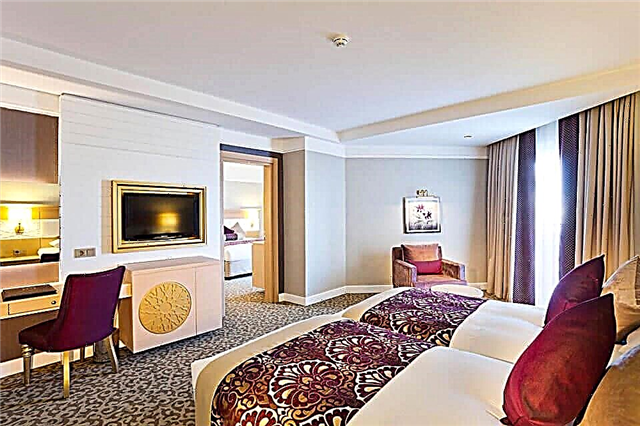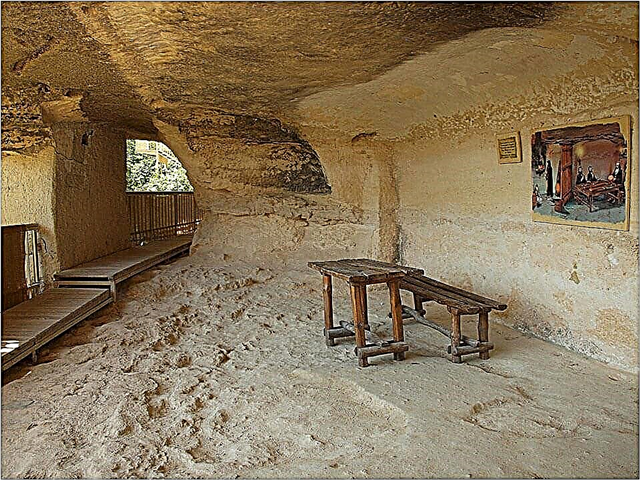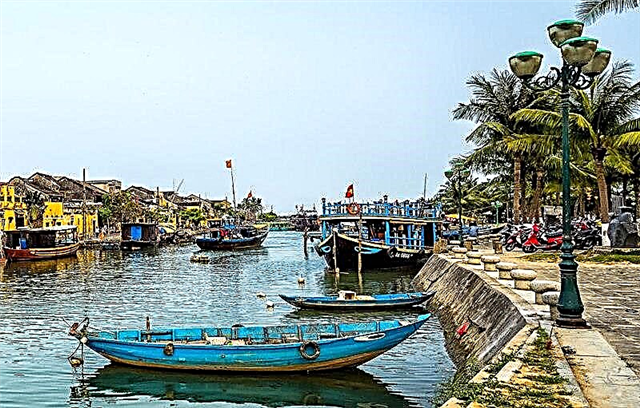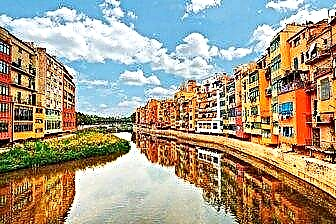Catalan Girona is a city where Romanesque buildings of the X-XII centuries still stand, and valuable artifacts from the Roman period and the dark times of the Early Middle Ages are kept in museums. The power of the past centuries seems to have frozen forever in the facades of the houses of the Jewish Quarter and the outlines of formidable Romanesque churches.
Girona is located far from the coveted beaches of the Costa Brava, but the city does not lose its value from this. Many tourists come here on excursions from the resort towns of the coast to diversify a lazy beach vacation, and are satisfied. In addition to the grandiose architectural landmarks, Girona has several standing museums that house priceless artifacts of great interest to history buffs.

The best hotels and hotels at affordable prices.
from 500 rubles / day
What to see and where to go in Girona?
The most interesting and beautiful places for walking. Photos and a short description.
Fortress walls
The fortress walls of Girona were erected in the 1st century during the heyday of the Roman Empire, they were part of the defensive structures that protected the road from Rome to Seville. Only a small part of the walls has survived to this day, which has been restored. The viewing platforms located along the perimeter offer a panoramic view of the city. Nowadays, the fortress walls are a popular tourist attraction.

"Lioness of Girona"
A sculpture from the 11th century installed next to the church of Sant Feliu. The figure of a lioness is somewhat reminiscent of the famous Roman wolf. There are many beliefs associated with this attraction. According to one of them, it is believed that if you kiss a lioness in the back seat, then all wishes will come true. For these purposes, a special staircase is even attached to the sculpture. In fact, the sculpture is the heraldic symbol of Girona, and kissing in an unusual place is just a joke custom.

Jewish quarter
Jews began to settle in Girona from the 9th century. Their community was very powerful before the wave of persecution that swept Europe in the 15th century. The displaced Jews were replaced by poor Christian families who were not involved in arranging the houses of the quarter. That is why the area has come down to us almost in its original form. Nowadays, El Cal has become a bohemian quarter, where real estate costs a lot of money.

Independence Square
One of the central squares of Girona, located on the site of the monastery of St. Augustine. The architectural appearance of the place was formed in the 19th century. The square is surrounded by the austere facades of neoclassical buildings and sculptural colonnades. Mass public events, festive bazaars and music festivals are held here. There are many restaurants and bars with outdoor summer areas on Independence Square.

Rambla de la Libertad
Girona's central promenade, packed with tourists in all seasons. The Rambla de la Libertad has numerous cafes, boutiques and gift shops. Until 1809, the city wall ran along the street, but it was destroyed by Napoleon's troops. On weekends, there is a flower market that sells a huge variety of species. From the street you can turn into the Jewish quarter or walk to the bridges over the Onyar River.

Girona Cathedral
The first Romanesque church on the site of the modern cathedral was erected in the 11th century. In the Roman era, there was a pagan sanctuary here. In the XIV century, a Gothic building appeared, which was completed only in the XVI century. As a result of later reconstructions, the cathedral acquired a baroque façade. The inner courtyard of the church has been preserved since the 12th century; inside there are many ancient relics of great cultural value.
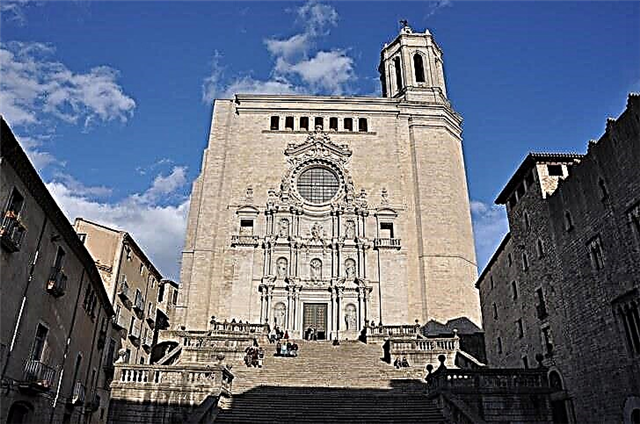
Church of Saint Philip
The temple was erected in the XIV century on the site of an early Romanesque church, where the graves of the city's patrons - St. Philip and St. Narcissus were located. In the 16th century, a tower was added to the building; in the 17th century, the facade was finished. The interior has retained its austere Romanesque appearance with its characteristic massive galleries. Roman and early Christian burials have also been preserved on the territory of the temple.

Monastery of Saint Peter Galligans
The monastery was founded in the XII century and at first belonged to the brothers of the Order of St. Benedict. A Romanesque building with a two-storey bell tower has survived to this day. In the XIV century, the complex was transferred to the state. Since the 19th century, the abbey has housed a museum, now known as the Archaeological Museum of Girona. One of its most valuable exhibits is considered to be the antique mosaic "Race in chariots" and an ancient sarcophagus dating back to the 4th century.

Museum of Jewish History
The exposition of the museum is devoted to the history and culture of the Jewish community, which has lived in Catalonia since the Early Middle Ages. The collection is housed in 11 thematic rooms, which include Diaspora, Jewish Quarter, Synagogue, Cemetery and others. In the museum you can learn about the life and life of Jews, traditions and religious rites. Periodically, temporary exhibitions are organized on the territory of the museum.

Film Museum
A private museum with a rather impressive exposition of 30 thousand items. The collection is dedicated to the history of theater and cinema, from the period of Antiquity to the present day. The museum houses the Lumiere brothers' film projector, many old posters, photographs and films. The gallery was opened in 1998, it became the first museum of this kind in Spain.

Girona Art Museum
The museum is located in the building of the Bishop's Palace, which, according to evidence, was built in the 10th century. The last reconstruction of the building dates back to the 16th century, it was then that the features of the Renaissance were introduced into the architectural appearance of the palace. The museum collection consists of 8,500 exhibits. It houses historical artifacts from the Romanesque era to the 20th century.

Arab Baths
The baths are located in the central part of Girona, they were built in the 12th century during the reign of King Alfonso I. The building was built in the style typical for the cities of North Africa. At first, the baths belonged to the royal family, but after the reconstruction of the 13th century, access was open to everyone. In the 15th century, the baths again passed into private ownership and were subsequently closed. Reconstruction was carried out in the XX century.

Gustave Eiffel bridge
Pedestrian bridge over the river Onyar, designed by the famous G. Eiffel - the architect of the Parisian Eiffel Tower. The bridge in Girona was erected in 1876, the design was revolutionary for its time, as the Eiffel used metal ties to increase its strength. The Gustave Eiffel Bridge is a fairly compact structure that harmoniously fits into the surrounding landscape.

Parc de la Devesa
A small city park covering an area of 40 hectares, on the territory of which huge 150-year-old trees with a trunk height of up to 50 meters grow. It is good to be in the shade of these giants during the sweltering Catalan heat. The park has a Botanical Garden and a banana grove. For townspeople and tourists, this place is a real green oasis, giving a long-awaited coolness.
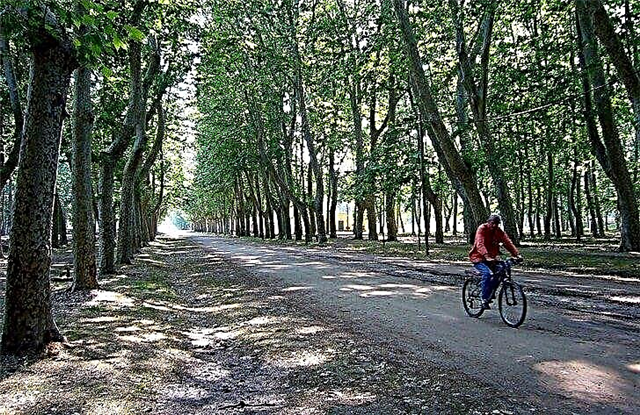
Onyar river
A waterway that flows through the center of Girona. The embankment of the Onyar River is built up with houses with colored facades, which gives it a rather festive and elegant look. These facades have long become the hallmark of the city; many tourists come to see them.The houses were built in the 17th century on the site of the demolished city wall, since then they have been rebuilt several times, but still retained their original appearance.


